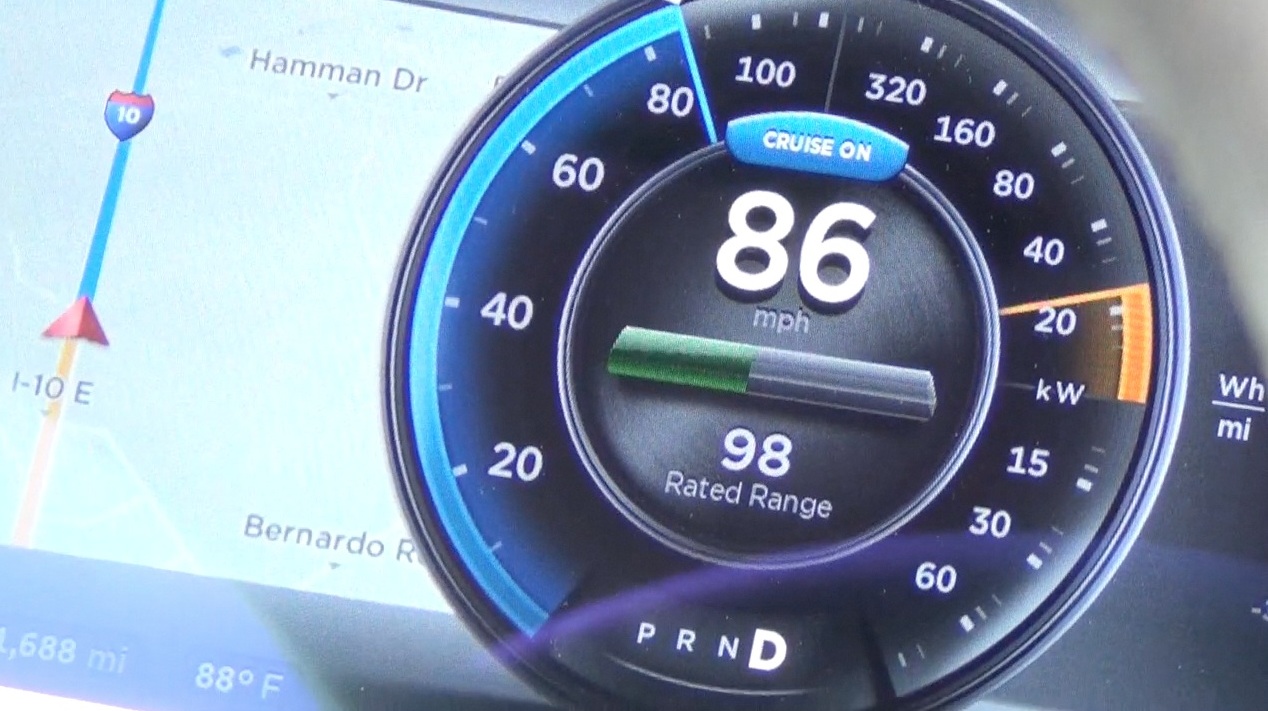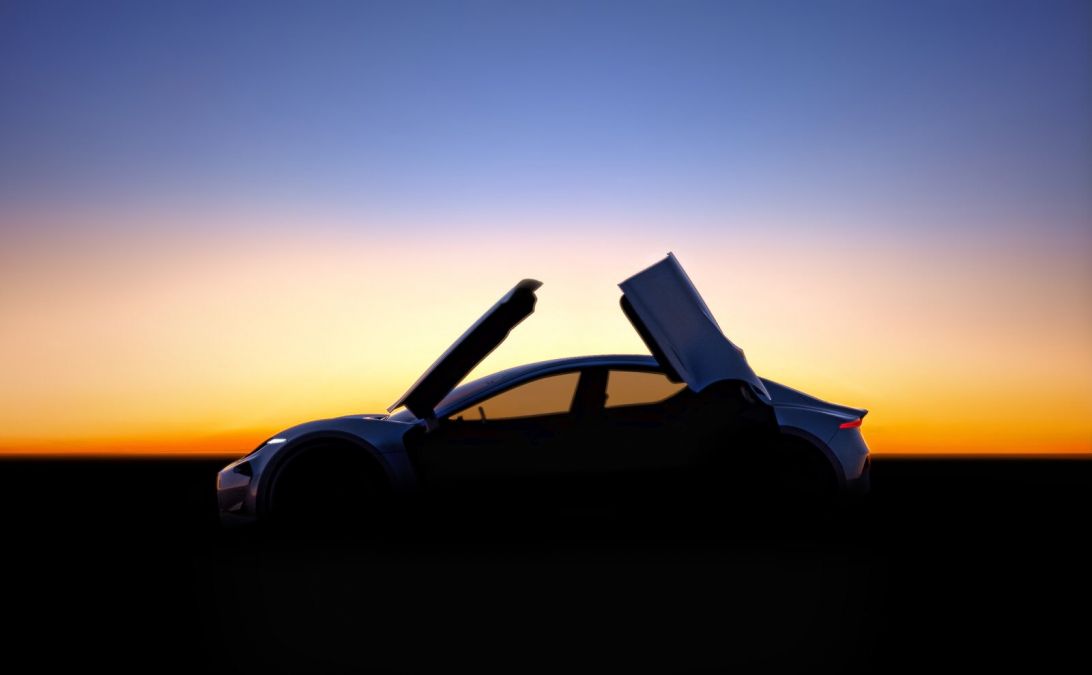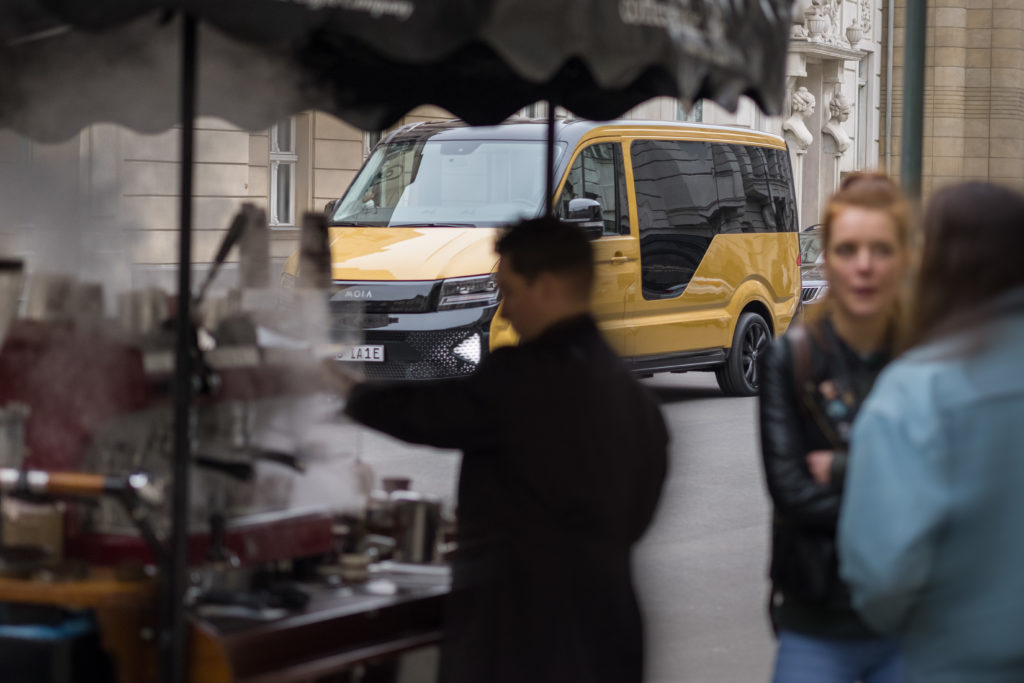
Rideshares’ benefits include reducing air and noise pollution as well as ease traffic
MOIA, the mobility startup from the Volkswagen Group just introduced its ride pooling concept just one year after its inception.
[perfectpullquote align=”full” bordertop=”false” cite=”” link=”” color=”” class=”” size=””]MOIA’s green goal is to remove one million cars from cities[/perfectpullquote]
The startup’s concept provides new mobility options that will significantly reduce traffic and help reduce air and noise pollution in major cities. MOIA will present its ride pooling ecosystem with the mission “One Million Cars off the Road” at TechCrunch in Berlin, where the first self-designed MOIA car, that is fully electric and optimized for ride pooling services, will make its debut.

Rideshare could be just as convenient as an Uber and help reduce traffic
[perfectpullquote align=”full” bordertop=”false” cite=”” link=”” color=”” class=”” size=””]“We started one year ago at TechCrunch in London with the vision of partnering with cities to improve the efficiency on their streets. We want to create a solution for the typical transport problems that cities face, such as traffic, air and noise pollution, and lack of space, while simultaneously helping them reach their sustainability goals. In a short time, we’ve laid the groundwork to add a new mobility component to the urban mix. In 2018, we’ll be ready to launch our ride pooling concept internationally and take the first steps toward our goal of reducing the number of cars in major cities by one million in Europe and the USA by 2025, says Ole Harms, MOIA CEO.”[/perfectpullquote]
[envira-gallery id=”1212″]
The entire program is slated to start by the end of 2018. “We’ll be able to offer the complete ride pooling value chain – as needed or just individual pieces,” says Harms. This is not a closed system, however, various operator models are available and can be developed with the cities and partners.
The centerpiece of the pooling system is the MOIA EV car. This will be presented at the TechCrunch public viewing. Along with the car, the system also utilizes a smartphone app, which passengers will use to book and pay for the Rideshare, similar to Uber’s and Lyft’s app. The app will show which cars are available and how much the ride will cost before a customer books a trip. A pooling algorithm groups passengers with similar destinations together in order to increase the capacity for each car and to avoid detours. A driver app and comprehensive fleet management complete the system.
[envira-gallery id=”1189″]
MOIA EV
The MOIA car is a full electric car that provides space for up to six passsengers.
The interior was designed to be spacious with standalone seats with plenty of legroom, and with enough headroom to stand and space to move around and reach each seat with ease. The car was developed and designed exclusively for ride pooling services. Convenience was built into the EV with features such as dimmable reading lights and USB ports. Each car also offers fast WiFi for passengers. The automatic passenger side door and handlebar make getting in and out of the car easy. There is a convenient luggage area where the traditional passenger seat used to be for riders luggage.
“The car represents total comfort and is a crucial piece of our consistent service experience. We developed it using our co-creation process, which involved multiple rounds

MOIA – Ole Harms
of potential users of various age groups testing cars and providing feedback. Many of the ideas from this process went directly into the development of the car. We’re also working on other future versions as well,” says Robert Henrich, MOIA COO.
Volkswagen Commercial Vehicles and Volkswagen Osnabrück planned, developed and built the MOIA car in record time: ten months. The car has a range of more than 300 kilometers according to WLTP-standard and can be charged up to 80 percent in about 30 minutes. “Together with MOIA and VW Osnabrück, we are redefining car manufacturing;” says Eckhard Scholz from the Executive Board of Volkswagen Commercial Vehicles. “We are very proud of the fact that we were able to build a new car specifically tailored to the needs of ride pooling in just ten months.” This accomplishment was made possible through the use of agile processes in the Osnabrück plant. The car will make its debut on the streets of Hamburg next year.
MOIA has been testing its service in Hannover since October 2017 and continuously developing its components in real time. The “MOIA co-creation process” is an integral part of this test, which consists of a fleet of 20 Volkswagen T6 Multivans.
For more information, go to https://www.moia.io/press/
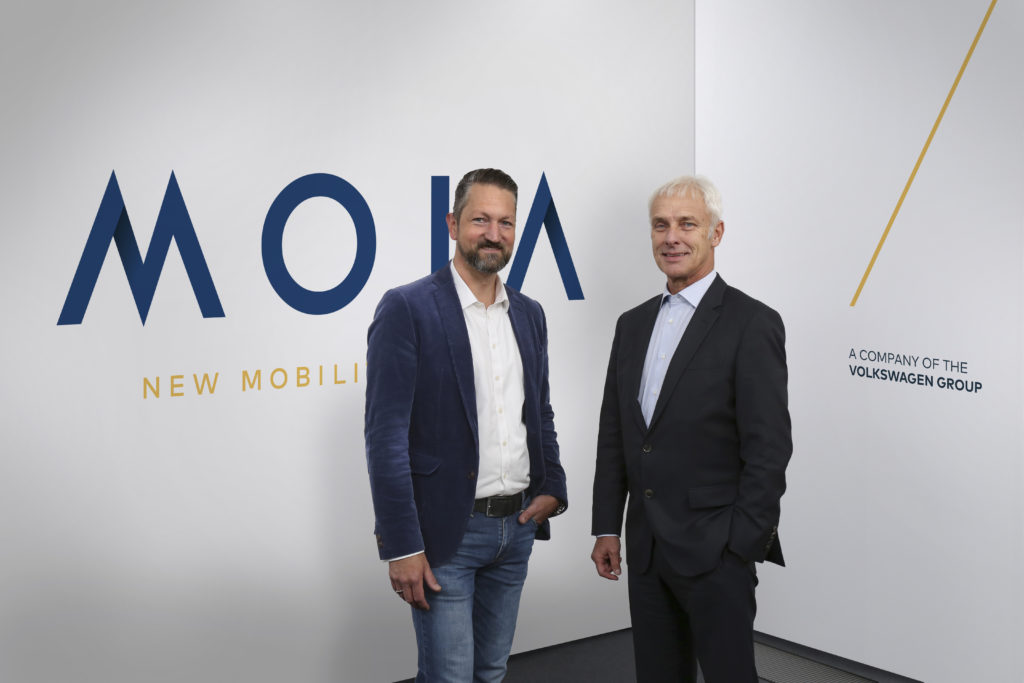
Ole Harms and Matthias Müller
About MOIA
MOIA is a 100% subsidiary company of the Volkswagen Group. The company, based in Berlin, Hamburg, and Helsinki, develops its own mobility services, working together with cities and public transportation organizations. MOIA is currently developing and implementing various services along the mobility value chain with multiple offerings for different user groups.
]]>California has spent heavily over the past seven years to incentivise the sales of zero-emission vehicles, to the tune of $449 million. The Air Quality Improvement Program administered by the State Air Resources Board established the Clean Vehicle Rebate Project, as a part of the Air Quality Improvement Program, to promote the production and use of zero-emission vehicles by providing rebates for the purchase of new zero-emission vehicles. The spending was to help reduce the emissions of greenhouse gasses, reduce pollution in and around metropolitan areas, and a host of other environmental factors. The incentives are available on a first-come first-served basis, but now the legislature wants to further incentivise and increase the funding to $3 Billion dollars. Somehow I can hear Dr. Evil stating that sum to me in my head.
NEW UPDATE – Sept 3
The proposed $3-billion spending bill that would boost rebates for electric vehicles was amended in the California Legislature late Friday.
The $3 billion dollar amount was taken out of bill AB 1184, and no dollar amount was inserted to take its place.
Instead, the bill is now a directive to the state Air Resources Board to conduct studies on the best ways to write and implement EV rebate legislation, with the report due Sept. 1, 2019.
Here is the copy newly amended to AB 1184:
SEC. 2.
(a) On or before January 1, 2019, the State Air Resources Board, pursuant to Section 9795 of the Government Code, shall submit to the Legislature a report regarding the operation of the vehicle incentive programs that includes both of the following:
(1) The funding levels necessary to support continuous, year-round operation of each of its zero-emission vehicle and near-zero emission vehicle incentive programs.
(2) Changes to the zero-emission vehicle incentive programs that are necessary to increase market penetration of zero-emission vehicles.
(b) The State Air Resources Board may contract with a third party for the preparation of the report required pursuant to subdivision (a).
The original bill also had a formula for higher rebate amounts. That was stripped out of the bill as well.
The final report, according to the current text of the bill, should suggest funding levels necessary to meet state emissions goals for zero and near-zero emission vehicles, and recommend changes to the existing rebate program to increase market penetration of such cars and trucks.
[perfectpullquote align=”full” cite=”” link=”” color=”” class=”” size=””]The bill allows the Air Resources Board to hire a contractor to prepare the report.[/perfectpullquote]
A good bet is that incentives may have a dry spell as monies are to go to another [useless] study/report, IMHO.
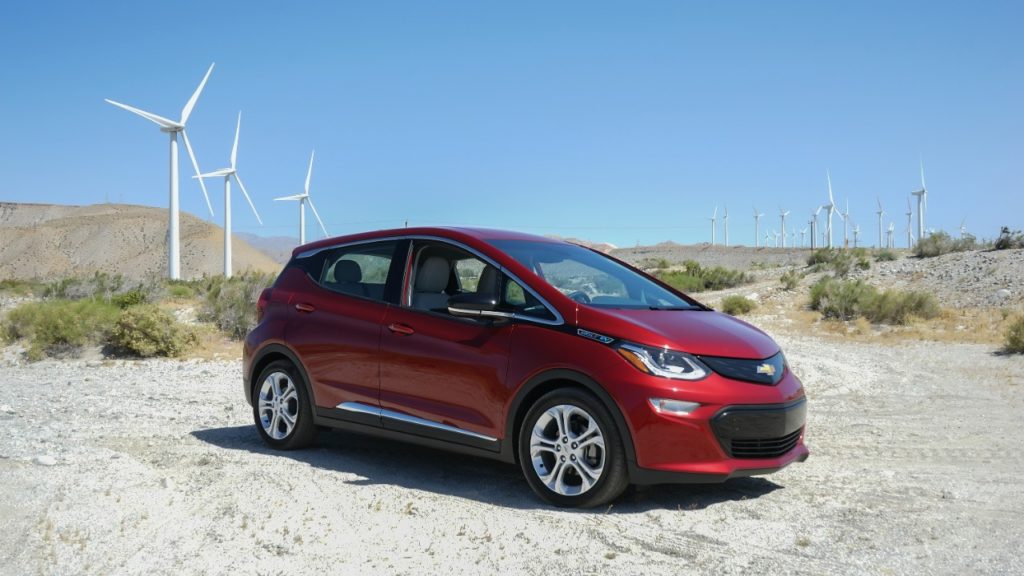
3 Billion can help buy a lot of EV’s for California
Federal and California EV and PHEV Rebates
Currently any Californian considering purchasing an EV or PHEV can expect up to $7,500 Federal Tax Credit and a California State subsidy of up to $5,000, as well as other subsidies such as:
- Additional $1,500 for low income households (CVRP)
- EV Charging Financing for local businesses and residents.
- Free EVSE Wiring – at businesses and apartment buildings (NRG EVgo)
- For more recent incentives and up to date lists list visit www.driveclean.ca.gov.
California’s car sales over the past years have steadily increased. 2016 saw over 2 million cars sold, but current car sales numbers are behind last year’s and according to CNCDA (California New Car Dealers Association) the sales trend is expected to decline slightly[2].
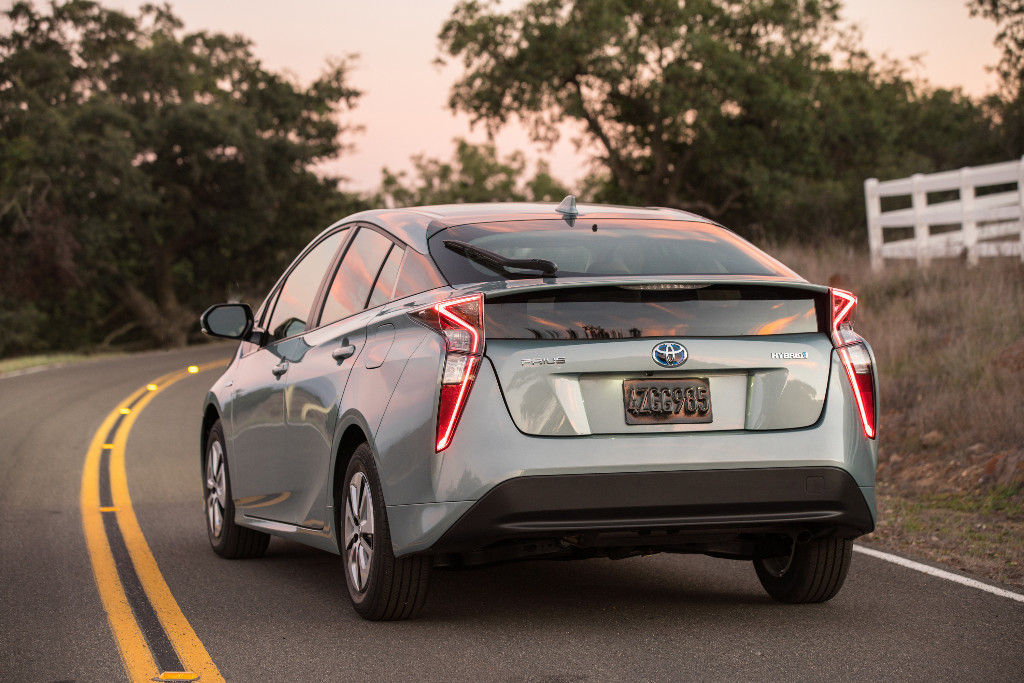
3 Billion up for grabs for public buying EV’s and PHEV’s in California
Now California’s is pushing forward Bill AB-1184 which will continue to help increase the number of low-polluting hybrid and EV automobiles on California highways by 2025, and to help reach the California Air Resources Board’s goal of 4 million such cars by 2030, at least that’s what Governor Brown is aiming for
Already approved by several Senate and Assembly committees, the bill will go to Gov. Jerry Brown for his approval or veto if the full Legislature approves it by the end of its current session on Sept. 15.
Cheap Incentivised EV’s
It is not entirely clear at this time on the exact amounts of the EV incentives are since the Bill passes that decision to the air resources board. It directs the board to use state rebate money so the consumer needn’t pay more for an electric compact car than a comparable gasoline-powered car, “so that if people really want an electric, price is no longer the issue,” said Assemblyman Phil Ting (D-San Francisco), sponsor of Assembly Bill 1184.
Which means you wouldn’t pay any more for a Chevrolet Bolt than the best selling car in California Honda Civic.
[perfectpullquote align=”full” cite=”” link=”” color=”” class=”” size=””]Price Points would be on a level playing field when comparing apples to oranges this time, how-bout-that![/perfectpullquote]

Tesla EV may have extra incentives in the near future if Bill AB-1184 passes.
The Bill could help increase the incentives to $10,000 or more per car. They feel if given the opportunity to purchase either a gasoline car or an EV car and the prices were comparable, we will have more electric cars as a result.
Rebate amounts would be based on the difference in price between an electric compact car and a comparably sized gasoline-powered car,
California seems to be a pioneering state when it comes to forward EV thinking, but is it worth spending so much on EV’s then other perhaps worthwhile social programs?
Sources:
[1] Drive Clean, CA. gov website – www.driveclean.ca.gov
[2] California New Car Dealers Association – http://www.cncda.org/Auto_Outlook.asp
]]>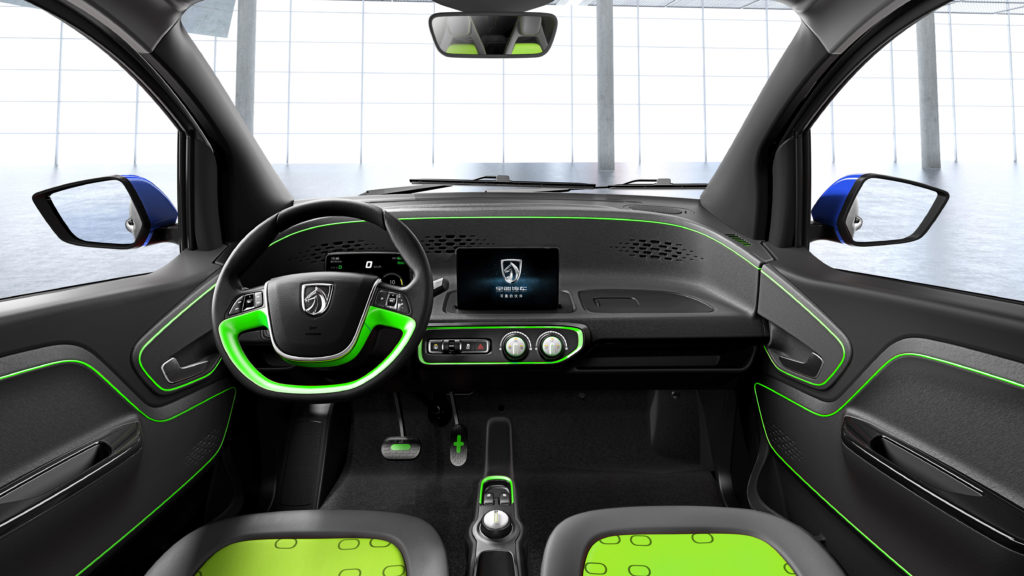
SAIC-GM-Wuling began limited pre-sales of the E100 in Liuzhou, Guangxi. Strong interest has has resulted in more than 5,000 people registering for the first 200 vehicles sold. Sales are initially limited to Guangxi, where the factory is located. As production ramps up, so will its distribution.


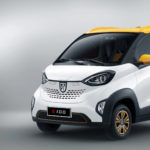
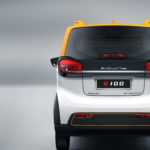
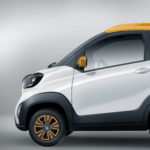
Baojun E100 Overview
Given the EV’s rather demure size, the E100 seats up to two adults quite comfortably. The cargo space is not listed but it appears rather limited to groceries or travel bags judging by the photos.
The vehicle has a maximum top speed of 100 km/h (62 mph), allowing it to travel on local roads and urban expressways in its native China. With a wheelbase of 1,600 mm (5.249 ft) and height of 1,670 mm (5.479 Ft) makes it about a foot or so shorter than the teeny Smart ForTwo. It has a turning radius of 3.7 meters enabling it to get in and out of tight spaces conveniently.
[perfectpullquote align=”full” cite=”” link=”” color=”” class=”” size=””]The size and range and abilities of the E100 makes it a rather excellent daily commuter.[/perfectpullquote]
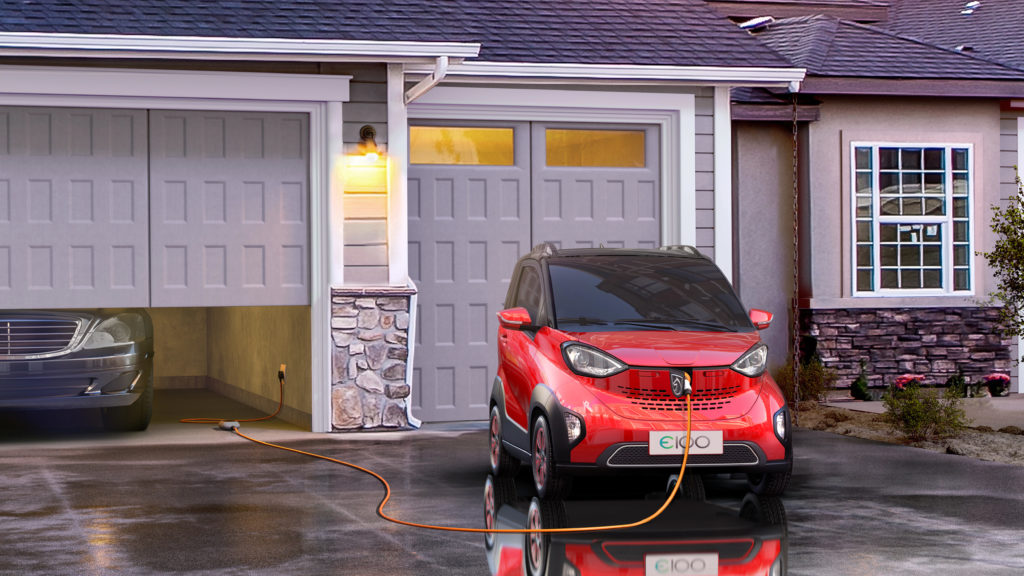
EV Battery Performance
The E100 has a single electric motor that produces 110 Nm of torque and 29 kW of motoring power. It can travel up to 155 km (96 miles) on a single charge. The lithium-ion battery pack can be fully charged in 7.5 hours. The Baojun E100, like many EV’s today is capable of capturing energy through a regenerative braking system to add charge back to the battery.
E100 Video
Safety
The E100 has an independent front-wheel suspension and single-arm rear suspension. Its impressive list of safety features includes anti-lock brakes with electronic brakeforce distribution, electric power steering, an electronic parking brake, parking sensors, ISOFIX locks for child safety seats.
The E100 has an air filter, parking sensors and a pedestrian alert system to optimize it for city use.
Given the EV’s rather demure size, the E100 seats up to two adults quite comfortably. The cargo space is not listed but it appears rather limited to groceries or travel bags judging by the photos.

Interior
The interior looks spartan, but in a neat and tidy way. Today’s cars no longer require a shifter, which is missing from the interior, replaces with a knob located between the seats. The drivers dashboard has a small screen with the vital functions. An available 7″ touchpad screen and Wi-Fi is centered on the dash. E100 users can enjoy their infotainment and remain connected while on the road.
The electric vehicle is also available with an air filter and keyless entry on the premium Zhixiang variant.


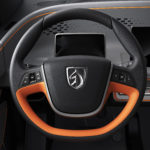
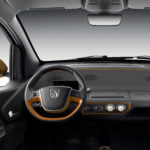
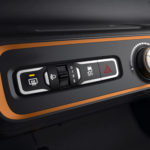
Baojun EV History
GM has 10 joint ventures, two wholly owned foreign enterprises and more than 58,000 employees in China. GM and its joint ventures offer the broadest lineup of vehicles and brands among automakers in China. More information on General Motors and China can be found at GM Media Online.
]]>The feat was accomplished by hypermiling a Tesla Model S P100D.
The Tesla Model S P100D rated range is 315 miles on a single charge.
Although The S model has an extra motor and thus extra weight, the trade-off is there is an extra 10 kWh of battery capacity. This provides the Model S with a 21 mile (34 km) range boost.
Even though there are a front and rear motor, the extra motor does not engage all the time.
Steven Peeters and Joeri Cools said they drove a Model S P100D around a closed loop in Belgium, adding that it took them 23 hours and 45 minutes to complete the feat.
Hypermiling involves driving a car at maximum fuel (or electrical) efficiency to see how long it can run on one charge or tank of gas
Among some of the Hypermiling techniques used to achieve this feat were…
Adjusting for speed:
Even a difference between 35 – 45 mph the fuel savings are drastic. They found 40 km/h (24 mph) to have the lowest possible energy consumption.
[perfectpullquote align=”full” cite=”” link=”” color=”” class=”” size=””]Peeters stated while driving without use of windows or A/C “It was just like sitting in hell and the sun was really burning”[/perfectpullquote]
Tires:
Adjusting the tire pressure way up to get the least resistance while still remaining safe on the road, for this trip it was set to 55psi or 3.7bar.
Cruise Control:
It was used in order to maintain the average speeds used
Using Efficient Routes:
— in this case trying to use roundabouts as to keep the car from frequent stops.
No Extra Electric Use:
— no use of extraneous electronics and that means no radio, windows or air conditioning!
Peeters stated while driving without use of windows or A/C “It was just like sitting in hell and the sun was really burning”
Although this is a case of extreme hypermiling, how far would you go to see how efficient of a driver you are?
]]>Fisker EMotion is slated to start at $129,900, With an Ultra Large Battery Pack Los Angeles, CA (June 6, 2017)—Fisker Inc. today released the design specifications and teaser photos of its 2019 production vehicle, the Fisker EMotion. The EMotion delivers an astounding over 400-mile electric range and a top speed of 161 mph.
Fisker EMotion: World’s most advanced EV. 400 mile + range, 9 min fast charging, autonomous & connected. Very proud of what we are creating! pic.twitter.com/7xWneZwMaT
— Henrik Fisker (@FiskerOfficial) June 10, 2017
The new EMotion is a clean sheet design from the inside out, utilizing a carbon fiber and aluminum structure to redefine the proportions of an electric vehicle. The vehicle’s design gives greater consideration than ever before to its passengers’ safety, comfort, and convenience. Fisker’s patented frontal crash structure exceeds current standards to protect all occupants. The cabin features a luxurious, spacious interior with superior rear legroom. Large ultra-light carbon fiber and aluminum wheels, developed in conjunction with Dymag, reduce rotational mass by 40%, further improving electric range.

The Fisker EMotion has been proportioned to accommodate an advanced highenergy density, patent-pending battery pack and cooling system. It can be charged through the vehicle’s proprietary UltraCharger technology, charging over 100 miles in nine minutes.
technology, charging over 100 miles in nine minutes.
The EMotion seamlessly combines technology into the design of the vehicle. The front end’s bright aluminum centerpiece houses a LIDAR system behind a tinted screen. Side mirrors conceal two cameras, which enable panoramic, 360-degree views to the driver.
-More WWW.FISKERINC.COM INFO@FISKERINC.COM
The EMotion has risen the bar of elegant design. Extreme aerodynamics include frontal, side, and rear carbon aero elements, as well as a low hood line surrounded by sculptural front fenders and a tapered green house with large sculptural rear fenders. The side DLO (Daylight Opening) is finished with a signature EMotion double-polished aluminum window molding. The rear end has a dramatic section with thin taillights, and an integrated lower carbon diffuser.
Reminiscent of how Tesla’s are sold, the EMotion will be sold directly through Fisker Inc.’s website and soon-to-appear experience centers. Servicing matters will be handled through The Hybrid Shop (THS), which is a joint venture between Fisker Inc. and THS.
 Fisker Service will provide its customers with a one-of-a-kind, white glove concierge service, providing Fisker owners a seamless day “free of interruption” for routine maintenance and servicing. At this current projected price tag, I wouldn’t expect anything less.
Fisker Service will provide its customers with a one-of-a-kind, white glove concierge service, providing Fisker owners a seamless day “free of interruption” for routine maintenance and servicing. At this current projected price tag, I wouldn’t expect anything less.
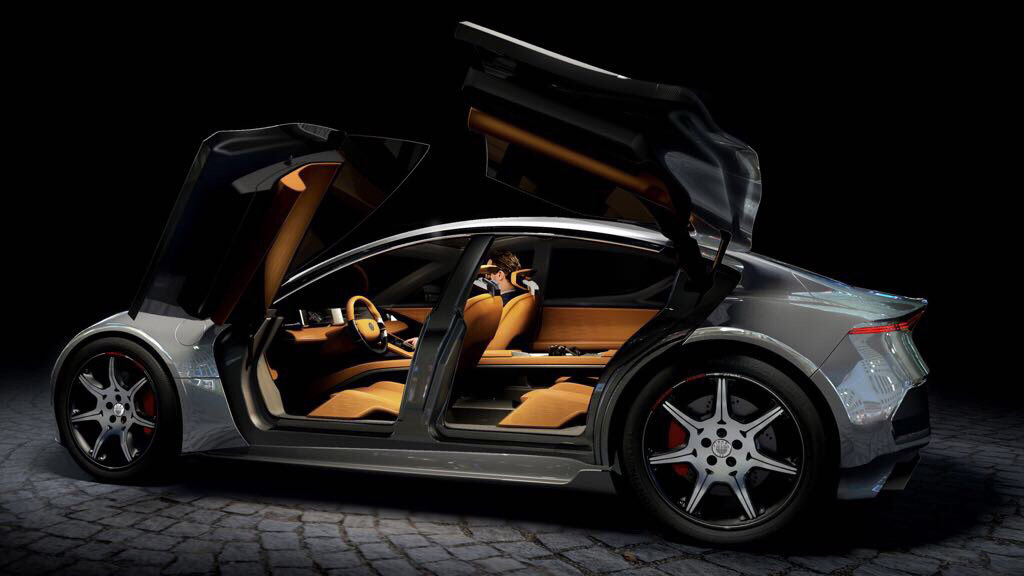
The company will be revealing additional information throughout June 2017. Preorders for the vehicle will officially begin June 30th at www.fiskerinc.com.
About Fisker Inc. About Fisker Inc. California-based Fisker Inc. is an American electric vehicle OEM revolutionizing the industry by developing electric vehicles with the world’s longest EV range. The brainchild of EV pioneer and world-leading automotive designer, Henrik Fisker, Fisker Inc.’s mission is to set a new standard of excellence and performance in the electric vehicle industry, developing unique, high-performance electric vehicles with disruptive design and battery technology. Only time and true testing will let us know if the EMotion will be a serious contender or just another rarity like it’s predecessor the Fisker Karma.
To learn more, visit www.fiskerinc.com.
]]>- Two new stations account for a more than 15 percent increase in fast-charge connections in Michigan
- Bolstering electric-vehicle infrastructure is a key step in anticipation of upcoming next-generation Nissan LEAF
- Chargers feature CHAdeMO and CCS (Combined Charging System) DC fast-charging outlets, continuing Nissan’s “Infrastructure for All” initiative
[ad_1]
DETROIT – Nissan has completed the installation of two new DC fast-charge stations in Southeastern Michigan, adding to the growing infrastructure of electric vehicle fast-chargers in the state. The stations are located at USA 2 GO convenience stores in the towns of Novi and Howell, along the I-96 expressway, allowing for easy access to one of the state’s busiest highways.
“Nissan is dedicated to building a convenient EV charging infrastructure across the U.S. While it’s not a priority for everyone, we firmly believe a robust infrastructure is key to the growth of EVs,” said JeSean Hopkins, senior manager, EV infrastructure strategy & business development, Nissan North America. “Adding these fast chargers to Michigan’s EV infrastructure will benefit all regional EV owners, regardless of make or model.”
The two stations represent a more than 15 percent increase in Michigan’s current fast-charge EV infrastructure. Each station, installed in collaboration with EVgo and GoSpace, includes both CHAdeMO and CCS DC fast-charging outlets so all EV owners have the ability to charge their vehicles. Of the 15 DC fast chargers now on-line in the state, Nissan had a direct part in the installation of each one. Additionally, Nissan has played a part in the installation of 55 percent of all CHAdeMO fast-charge connections to date across the U.S., and recently announced the I-95 Fast-Charge ARC project that connects a 500-mile span between Boston and Washington D.C.
This expansion will allow EV owners a quick, safe and convenient place to charge their vehicles while traveling greater distances. Nissan is proud to reaffirm its commitment to public fast-charging infrastructure with these new locations in anticipation of the upcoming next-generation Nissan LEAF. The all-new LEAF will be unveiled globally in September.
For more information on the LEAF and the complete Nissan vehicle lineup, please visit NissanNews.com.

About Nissan North America
In North America, Nissan’s operations include automotive styling, engineering, consumer and corporate financing, sales and marketing, distribution and manufacturing. Nissan is dedicated to improving the environment under the Nissan Green Program and has been recognized annually by the U.S Environmental Protection Agency as an ENERGY STAR® Partner of the Year since 2010. More information on Nissan in North America and the complete line of Nissan and Infiniti vehicles can be found online at NissanUSA.com and INFINITIUSA.com, or visit the U.S. media sites NissanNews.com and INFINITInews.com.
About Nissan Motor Co., Ltd.
Nissan is a global full-line vehicle manufacturer that sells more than 60 models under the Nissan, Infiniti and Datsun brands. In fiscal year 2016, the company sold 5.63 million vehicles globally, generating revenue of 11.72 trillion yen. Nissan engineers, manufactures and markets the world’s best-selling all-electric vehicle in history, the Nissan LEAF. Nissan’s global headquarters in Yokohama, Japan, manages operations in six regions: Asia & Oceania; Africa, Middle East & India; China; Europe; Latin America; and North America. Nissan has a global workforce of 247,500 and has been partnered with French manufacturer Renault under the Renault-Nissan Alliance since 1999. In 2016, Nissan acquired a 34 percent stake in Mitsubishi Motors, which became the third member of the Alliance – a grouping with combined annual sales of almost 10 million units a year.
For more information about our products, services and commitment to sustainable mobility, visit
nissan-global.com. You can also follow us on Facebook, Instagram, Twitter and LinkedIn and see all our latest videos on YouTube.
About EVgo
EVgo currently operates the largest public fast-charge network in the United States, with over 900 fast chargers in 66 of the top-selling automotive markets in the U.S., and supports all current charging standards. EVgo provides exemplary service because it owns and operates its charging stations, and utilizes a variety of flexible charging plans for drivers including pay-as-you-go, low-cost membership charging plans and unlimited charging plans for customers of automaker partners. Connect with EVgo on Facebook and follow them on Twitter.
About GoSpace
GoSpace proudly serves as a leading facilitator of EV Charger placements, working closely with AAA and a host of corporate partners to ensure that EV Chargers are readily available for the growing Electric Vehicle market. As such, GoSpace provides everything needed from engineering and permitting to installation and finishing touches. GoSpace recognizes its responsibility to educate and assist businesses that are considering EV Chargers for their employees and customers. Feel free to learn more at www.gospacego.com.
About USA 2 GO
USA 2 GO Quick Store operates mutable, specialty convenience fuel centers in Michigan. The stores represent a thoroughly modern presentation of the convenience store. USA 2 GO Quick Store’s focus is on cleanliness, customer service, variety of brand-name products and efficiency for our customers. It truly is a one-stop shopping experience when you need to fuel your vehicle. USA 2 GO Quick Store’s mission is to provide our customers with a clean and friendly experience, easy accessibility, convenience and the largest variety of quality name-brand products in the areas we serve.
# # #
Contact
Tim Gallagher
Electric Vehicle Communications, Nissan North America
949-370-6862
tim.gallagher@nissan-usa.com
[ad_2]
]]>Partners lead EV fast-charge deployment with second ‘Advanced Recharging Corridor’ project
- Later this year, electric-vehicle owners in the Northeast will be able to make the 500-mile journey between Boston and Washington D.C. more conveniently thanks to a series of DC fast-charge stations along the “I-95 Fast-Charge ARC”
- Nine EVgo DC fast-charge sites, with 50 total chargers equipped with two fast-charge plugs each, are set to provide the necessary charging infrastructure to connect the two cities and everything between
- Most of the charging stations are located conveniently off I-95 for easy on/off access and will be among the nation’s largest public charging stations to assure availability and speed of service
NEW YORK – Nissan and EVgo have revealed a plan to connect Boston and Washington D.C. via nine electric-vehicle DC fast-charge sites. Unveiled at the opening ceremony of the 2017 New York International Auto Show, the plan will deliver a robust charging infrastructure along I-95, providing EV owners peace of mind when driving along the route. The Northeast charging route is slated to be on-line this fall.
The “I-95 Fast Charge ARC” is already under construction. Covering the 500-mile span between the two cities, the nine sites and 50 total charging stations will have a capability of charging four or more EVs simultaneously at a power output of 50kW. The charging sites have been designed with future advances in EV technologies in mind, and have been pre-wired for a high-power charging power output of up to 150kW with simple upgrades once such technology is available to consumers.
“Regardless of range capability, a convenient fast-charge infrastructure along high-traffic routes is imperative in the mass-adoption of electric vehicles,” said JeSean Hopkins, senior manager, EV infrastructure strategy & business development, Nissan North America, Inc. “This element of the EV equation is seemingly overlooked by others, but we’re all-in. Following a similar project in California, this is our second ‘corridor’ project in the U.S. and completion is expected in time for the launch of the all-new Nissan LEAF.”

Related:
“This charging corridor will provide the best public charging experience available in the U.S. to drivers in one of the most densely populated and highly trafficked routes in the country, affirming Nissan’s commitment to EV drivers,” said Rob Barrosa, vice president, OEM strategy & business development at EVgo. “The sites are also designed to accommodate 150kW high-power charging, paving the way for charging the next generation of EVs on the East Coast.”
Each station will feature both CHAdeMO and Combined Charging System (CCS) DC fast-charging outlets as a part of Nissan’s inclusive “Infrastructure for All” initiative. When plugged into a DC fast charger, a Nissan LEAF can be charged up to 80 percent in approximately 30 minutes.
As the global leader in EV sales, Nissan has played a leading role in growing the number of DC fast-charging stations in the U.S., to more than 2,100 CHAdeMO connections to date. As a part of the “Infrastructure for All” initiative, Nissan also played a key role in the 1,200-plus CCS DC fast-charge connections, and more than 38,000 Level 2 chargers installed across the country.
The goal of the “I-95 Fast-Charge ARC” is to create a true inter-city charging network to encourage long-distance EV travel along the Northeastern seaboard. The corridor represents the newest addition to EVgo’s network of more than 900 EV fast-charging stations in more than 600 locations.
About Nissan North America
In North America, Nissan’s operations include automotive styling, engineering, consumer and corporate financing, sales and marketing, distribution and manufacturing. Nissan is dedicated to improving the environment under the Nissan Green Program and has been recognized annually by the U.S. Environmental Protection Agency as an ENERGY STAR® Partner of the Year since 2010. More information on Nissan in North America and the complete line of Nissan and Infiniti vehicles can be found online at www.NissanUSA.com and www.InfinitiUSA.com, or visit the U.S. media sites NissanNews.com and InfinitiNews.com.
About Nissan Motor Co., Ltd.
Nissan is a global full-line vehicle manufacturer that sells more than 60 models under the Nissan, Infiniti and Datsun brands. In fiscal year 2015, the company sold more than 5.4 million vehicles globally, generating revenue of 12.2 trillion yen. Nissan engineers, manufactures and markets the world’s best-selling all-electric vehicle in history, the Nissan LEAF. Nissan’s global headquarters in Yokohama, Japan, manages operations in six regions: ASEAN & Oceania; Africa, Middle East & India; China; Europe; Latin America and North America. Nissan has been partnered with French manufacturer Renault since 1999 and Mitsubishi Motors since 2016 under the Renault-Nissan Alliance.
About EVgo
EVgo currently operates the largest public fast-charge network in the United States, with over 900 fast chargers in 66 of the top-selling automotive markets in the U.S., and supports all current charging standards. EVgo provides exemplary service because it owns and operates its charging stations, and utilizes a variety of flexible charging plans for drivers including pay-as-you-go, low-cost membership charging plans and unlimited charging plans for customers of automaker partners. Connect with EVgo on Facebook and follow them on Twitter.
For more information on Nissan products, services and commitment to sustainable mobility, visit our website at http://www.nissan-global.com/EN/. You can also follow @NissanMotor on Twitter.
# # #
Contact
Tim Gallagher
Electric Vehicle Communications, Nissan North America
949-370-6862
tim.gallagher@nissan-usa.com
Breanna Buhr / Brian Alexander
JMPR Public Relations (for EVgo)
(818) 992-4353
bbuhr@jmprpublicrelations.com
balexander@jmprpublicrelations.com
[ad_2]
Source link

- Nissan partners with Harrods to add all-electric Nissan e-NV200 to the British store’s fleet
- The 100 percent electric van, decked out in traditional Harrods livery, will make daily deliveries to the store’s customers
- Harrods is the latest European business to put its trust in Nissan as the leader in electric vehicle technology
- In total Nissan has sold more than 27,000 electric vehicles to businesses across Europe
[ad_1]
LONDON – Over 100 years after the legendary London department store first added an electric van to its fleet, Harrods is once again returning to EV technology, with the addition of the 100-percent electric Nissan e-NV200 delivery van.
The British department store is the latest European business to add a zero emission Nissan e-NV200 to its fleet, with more than 27,000 Nissan electric vehicles sold to businesses across Europe so far.
Nissan officially handed over the 100-percent electric van to Harrods outside its luxury Knightsbridge store this week.
The Nissan e-NV200 has been specially adapted to perfectly fit Harrods’ delivery needs. The load space of the van has been fully refrigerated and shelving units added to allow for fresh groceries to be transported in optimum condition. The exterior has also been wrapped in the traditional green and gold Harrods livery to make it recognizable as it travels around the city.
The e-NV200 has a range of up to 170 km on a single charge*, which means it is easily capable of making up to 50 deliveries per week covering an average distance of 241 km in the London area with Harrods only needing to charge it once a week.
With an average running cost of as little as €0.03 per km, the e-NV200 offers an alternative practical solution which will have a positive effect on city-center air quality.
In 1919, the store used solid-tired American Walker electric vans, later building its own fleet of 60 electric vehicles to deliver goods to local London customers. As petrol engines became more popular, the electric vans were slowly phased out. However with the introduction and development of new infrastructure and technology, Nissan has enabled Harrods to have an all-electric van on its fleet once again.
“It’s wonderful to see an electric Harrods van on the roads of London again,” said Guy Cheston, media sales director at Harrods. “As one of Britain’s largest established department stores, we are committed to reducing our carbon emissions and mitigating our environmental footprint. As part of our carbon and energy management policy, we have identified transportation as a key area where we can make a real impact. We have a strong heritage in developing innovative technology, both in-store and out, and Harrods was one of the first companies in the UK to develop an all-electric commercial fleet, introducing our first electric vehicle over 100 years ago. Electric technology has developed rapidly since our old fleet was in operation, and is now a far more sustainable transport solution. Nissan is the leader in EV technology and the e-NV200 was the obvious choice for us, allowing us to easily complete daily deliveries more sustainably and efficiently.”
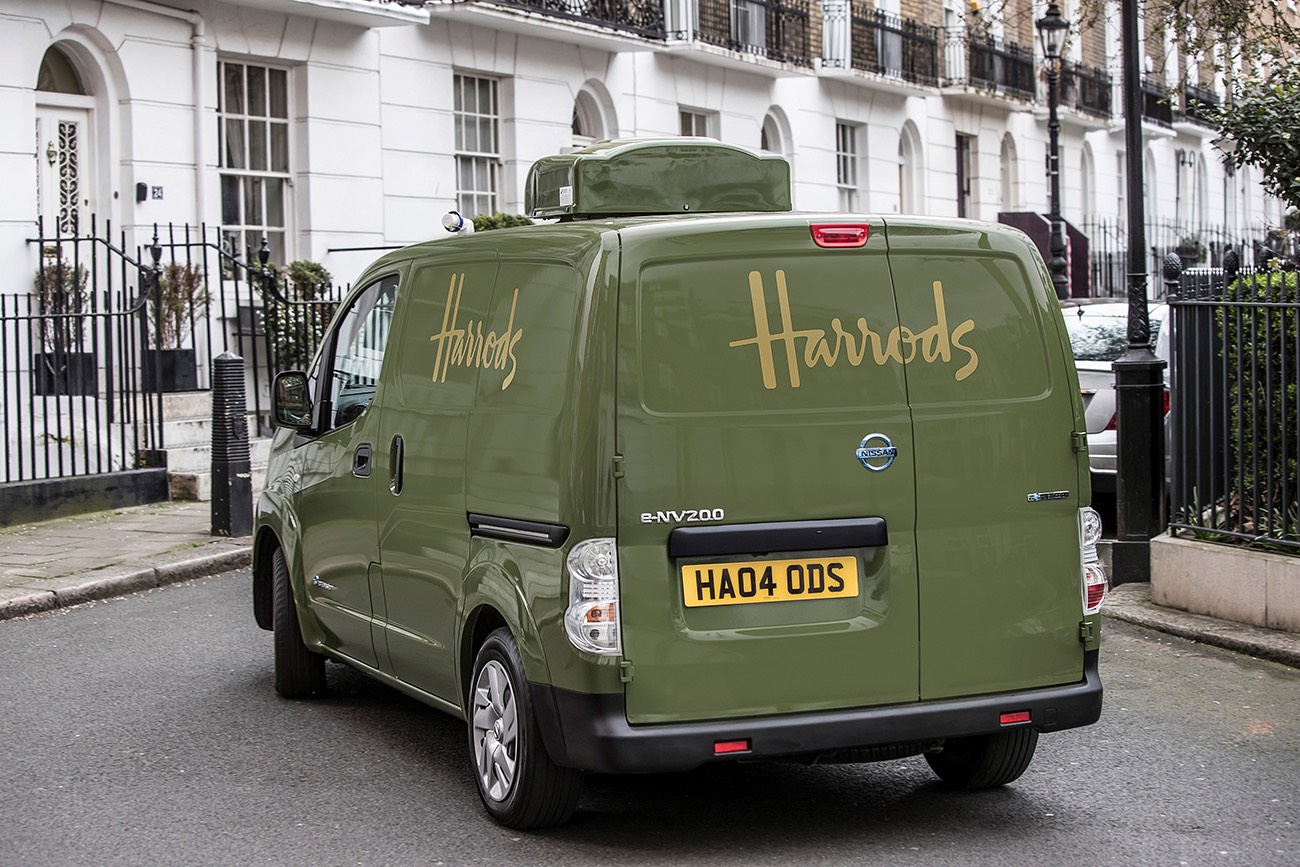 As a pioneer of the EV market since 2010, Nissan has continued to provide Intelligent Mobility solutions for the masses and has sold more than 290,000 EVs globally. Harrods joins more than 900 companies worldwide who have trusted Nissan to help them towards a more sustainable future. Named Europe’s best-selling electric van in 2016, the e-NV200 is part of Nissan’s popular zero emission range, combining the best elements of two multi-award winning vehicles: the Nissan LEAF and Nissan NV200. It provides a zero emission light commercial vehicle solution, offering low vehicle running costs from as little as €0.03 per km and a range of up to 170 km on a single charge. This makes it the perfect transportation option for businesses both big and small, as not only does it contribute to reducing a company’s carbon footprint, it is also practical, reliable and cost-effective.
As a pioneer of the EV market since 2010, Nissan has continued to provide Intelligent Mobility solutions for the masses and has sold more than 290,000 EVs globally. Harrods joins more than 900 companies worldwide who have trusted Nissan to help them towards a more sustainable future. Named Europe’s best-selling electric van in 2016, the e-NV200 is part of Nissan’s popular zero emission range, combining the best elements of two multi-award winning vehicles: the Nissan LEAF and Nissan NV200. It provides a zero emission light commercial vehicle solution, offering low vehicle running costs from as little as €0.03 per km and a range of up to 170 km on a single charge. This makes it the perfect transportation option for businesses both big and small, as not only does it contribute to reducing a company’s carbon footprint, it is also practical, reliable and cost-effective.
“Businesses across Europe are taking major steps to reduce their impact on the environment, and it’s great to see such an iconic British department store embracing zero emission technology and putting the e-NV200 on their fleet,” said Gareth Dunsmore, director of Electric Vehicles for Nissan Europe. “Through Nissan Intelligent Mobility, we are working towards a sustainable future and we believe that zero emission vehicles, such as the e-NV200 are vital to tackling air pollution – an issue affecting many cities across Europe. The Nissan e-NV200 is designed for forward-thinking businesses, and I am delighted that Harrods has put its trust in us to help them switch to more sustainable transport solutions. Harrods is demonstrating to other European retailers how EVs can help to reduce the carbon footprint of their business while providing the practicality and versatility needed to deliver goods to customers across London.”
For more information about Nissan products, services and the brand’s commitment to sustainable mobility, visit www.nissan.eu/experience-nissan.html
* A range of up to 170km per full charge (based on new European Driving Cycle). Actual consumption and range may vary due to driving style road condition, air-conditioning and other factors outside our control.
About Harrods
Harrods began as a wholesale grocers’ and tea merchants in east London, first opening its doors in 1834. Since then, it has grown to become the world’s most famous department store, known for its unrivalled range of luxury merchandise.
As well as exclusive brands and myriad departments, one of Harrods’ most renowned attributes is its unparalleled service. Harrods continues to be guided by its philosophy of “anything is possible” and, to this day, our customers remain at the heart of everything we do. Harrods.com
About Nissan in Europe
Nissan has one of the most comprehensive European presences of any overseas manufacturer, employing more than 17,000 staff across locally based design, research & development, manufacturing, logistics and sales & marketing operations. Last year Nissan plants in the UK, Spain and Russia produced more than 660,000 vehicles including award-winning crossovers, commercial vehicles and the Nissan LEAF, the world’s most popular electric vehicle. Pursuing a goal of zero emissions and zero fatalities on the road, Nissan is leading the field with its vision of Intelligent Mobility. Designed to guide Nissan’s product and technology pipeline, this 360 degree approach to the future of mobility will anchor critical company decisions around how cars are powered, how cars are driven, and how cars integrate into society. Nissan is positioned to become the most desirable Asian brand in Europe.
http://www.newsroom.nissan-europe.com
About Nissan Motor Co., Ltd.
Nissan is a global full-line vehicle manufacturer that sells more than 60 models under the Nissan, Infiniti and Datsun brands. In fiscal year 2015, the company sold more than 5.4 million vehicles globally, generating revenue of 12.2 trillion yen. Nissan engineers, manufactures and markets the world’s best-selling all-electric vehicle in history, the Nissan LEAF. Nissan’s global headquarters in Yokohama, Japan manages operations in six regions: ASEAN & Oceania; Africa, Middle East & India; China; Europe; Latin America and North America. Nissan has been partnered with French manufacturer Renault since 1999 and Mitsubishi Motors since 2016 under the Renault-Nissan Alliance.
For more information on our products, services and commitment to sustainable mobility, visit our website at http://www.nissan-global.com/EN/. You can also follow @NissanMotor on Twitter.
# # #
Contact
Cedric Ratinaud
Intelligent Mobility and Corporate Communications
CRatinaud@nissan-europe.com
Phone: +33616643481
Kayleigh Edwards
Intelligent Mobility and Corporate Communications
Kayleigh.Edwards@ntc-europe.co.uk
Phone: +441234755860
[ad_2]
]]>Car manufacturers tout Hybrid car’s efficiency. Consumer advocates dispute claims of 60-plus miles per gallon gas efficiency. Amidst the controversy, environmentalists still claim, in the absence of anything better – that hybrid vehicles are still better for the environment than their traditional gas-guzzling counterparts.
Hybrid’s Are Good For The Environment
Hybrids combine both gas and electric power to offer a cleaner ride. They have come under fire in recent months for their inability to reach gas mileage milestones set by the manufacturers. Critics say that most fail to live up to claims of getting more than 60 miles to a single gallon of gas. Advocates argue that recent studies confirm the same is true for efficiency ratings set on traditional engines, still making hybrids the better deal environmentally.
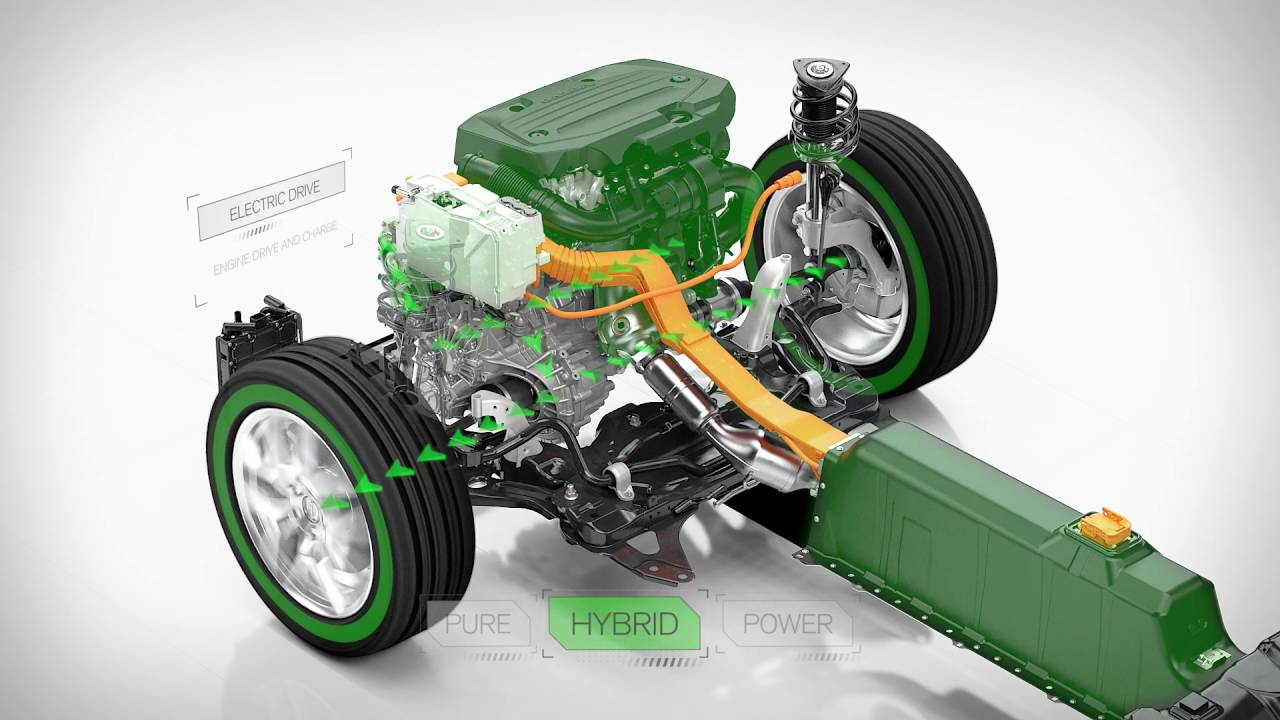
[perfectpullquote align=”full” cite=”” link=”” color=”” class=”” size=””]still making hybrids the better deal environmentally. [/perfectpullquote]
Touted as the gas-saver of the future when introduced in 1999, hybrids are known to use a fraction of the gas due to their ability to “share the burden”, with their electric motors. Full hybrid vehicles allow the electric motor to work independently of the more traditional internal combustion engine, while driving at low speeds. This in turn saves gas, and stops harmful emissions from entering the atmosphere. During an idle stop, a full hybrid actually shuts itself off, letting the electric motor take over to eliminate unnecessary idling and emissions.
Hybrids Still Use Gas
Consumers should be aware, however, that the mild hybrids focus remains on traditional gas consumption, with the electric motor only assisting the gas engine at high speeds when more power is needed, thus making the mild hybrid much less environmental friendly than its full hybrid counterpart.
Great for in town drivers, the full hybrid allows slow speeding drivers to virtually use only the electric motor, thus saving even more gas, and eliminating harmful emissions into the environment.
Despite any controversy surrounding today’s hybrid vehicles, consumers don’t seem to mind. Hybrid consumers are eager to do what they can to decrease the harmful effects of emissions on the environment and save a few bucks at the pumps. Production of hybrid vehicles has tripled in the last four years. By 2015, nearly 5.37 million hybrid vehicles will be on the road globally, compared to less than one million last year. This is according to the Yano Research Institute Ltd
Popular Hybrid Cars
Honda, Toyota, Ford, Lexus and Chevrolet, all offer their own hybrid varieties. Newer models sport higher-powered and faster models, even making hybrid SUV’s and trucks available to the consumer. Of course, the heavier the vehicle, and the faster it rides, the more gas it is bound to use. Despite the use and size of the internal electric motor, hybrids are still behind EV’s in environmentalistic concerns.
Still, hybrids remain the most gas efficient and environmentally friendly vehicles in mass production today.
[ad_2]
]]>Insights into the CEO’s life, from childhood to running one of the world’s largest automotive groups
Carlos Ghosn is Chairman of the Board and Chief Executive Officer of Nissan Motor Co., Ltd., a global automotive company with more than 240,000 employees and over US$110 billion in revenue. As the CEO of both Nissan Motor and Renault, and the chairman of the Renault-Nissan Alliance, Ghosn splits his time each month between Japan, France and other markets where the companies operate, such as the U.S., Brazil, China and the Middle East. This kind of lifestyle can take a toll on anyone – both physically and socially. But it’s what’s required of many leaders in the age of globalization.
What’s life like as a global CEO? What personal experiences – from childhood to university to advancing up the ranks of a company – helped shaped Ghosn on a personal level and as a global business leader? In this special multi-part series, Ghosn shares his life story, offering personal insights and professional lessons on what it takes to succeed.
New installments in this series will be posted here in coming weeks. (This series was originally published on Nikkei.com.)
Chapter 1: Early Life and Education
Up in the Air on New Year’s
I’m somewhere over the Atlantic Ocean now, cruising at an altitude of about 14,000 meters. As I fly toward Brazil, my thoughts are in Japan. While it is a tradition for me to spend the New Year holiday with my family in Brazil, a part of me wishes I could also be in Japan, on the most celebrated day of the year. I extend my Happy New Year’s wishes to all.

As head of Renault-Nissan, Carlos Ghosn
travels regularly between his offices
in Japan and France.
As the CEO of both Nissan Motor and Renault, and the chairman of the Renault-Nissan Alliance, I split my time each month between Japan, France and other markets where the companies operate, such as the U.S., Brazil, China and the Middle East. People often ask me what I do from day to day. It’s a difficult question to answer: No one day is like another. It depends on the region where I am working and what decisions need to be made. But while every day is different, it is also the same in the sense that I am focused on the performance and success of these businesses.
Regardless of where I am in the world, I am an early riser. In Paris, I’m usually at the office by 7:30 a.m. In Japan, I arrive closer to 8 a.m. because of the additional travel time between my home in Tokyo and Nissan’s offices in Yokohama. By the time I arrive, I have already been working quietly by myself for many hours. I find these are often my best hours.
Most of my day is tightly scheduled. Meetings start at 8 a.m. and don’t stop until the day is finished, often around 8 p.m. or later. It is not uncommon for me to leave Tokyo on a Friday night, attend meetings in another country over the weekend, then fly to Paris for a full week of work. It helps that I can sleep well on an airplane. This kind of lifestyle can take a toll on you, both physically and socially. It is not without a price to pay, and you have to manage that. But it is what is required of many leaders in the age of globalization.
Globalization is changing how business is done and what it means to be competitive. We are also seeing another societal trend shaping global business: the issue of identity and the resurgence of nationalism. These two trends coexist. To understand what I mean, consider Brexit. The U.K. voted to leave the European Union, but they still want to work with the region – and trade with the world.
Both trends are certainly at play at Nissan. Globalization is what makes it possible for us to sell our cars in more than 160 countries and attract diverse talent. But our identity remains deeply embedded in our Japanese DNA.
As I said, I also run Renault, a French automaker. For the last 17 years, Renault and Nissan have engaged in a unique alliance to generate synergies for both companies. These two companies have shared goals, but distinct cultures and identities. The Renault-Nissan Alliance is an example of how, despite differences in language, regions and traditions, two companies can be stronger together. In this way, the alliance also embraces both the opportunities of globalization and the benefits of individualism.
Just as globalization and identity describe Nissan, they also perfectly express my life. My grandfather was a Lebanese man who moved to Brazil, where I was born. But I spent my youth and high school days in Lebanon before attending college in France, where I acquired French citizenship. I also lived in the U.S. for many years, and I have children who live there still.
But I feel Brazilian when I’m in Brazil, so you can imagine my pride when I was able to carry the Olympic torch in my home country at the start of the 2016 Rio Olympics last summer. Some people tell me, “You’re like a different person when you’re going back to Rio.” Maybe that’s because I’m returning to my roots.
My children also grew up with many cultural influences. They were born in Brazil and the U.S., and they received their education in France, Japan and the U.S. Everywhere they have lived, they have picked up pieces of the culture: They have adopted the graciousness and scrupulousness of the Japanese people, while also embodying a uniquely French way of thinking. I believe that one day the world will be filled with people like them, those who retain their identities while embracing globalization.
Where a person is born no longer determines their destiny. Twenty years ago, it was normal for people to work in their home country, but from now on, more people will live and work far away from their birthplace. This opens up new opportunities but also exposes individuals to new risks. For example, globalization requires more people to work in an unfamiliar country for extended periods of time. In addition to adapting to new environments, they will have to deal with things like jet lag, and many may even lose friends along the way. The sacrifices they will make will be great, and they will need plenty of resolve and resources to overcome the challenges. My life has not been without these sacrifices. However, globalization can also expand one’s horizons, allowing people to realize their potential and achieve success.
People around the world, particularly in Japan, are opening up to the idea of a global lifestyle. It is in this context that I share my own story, with the hope that it may provide some inspiration.
This portion of My Personal History: Carlos Ghosn was originally posted on Nikkei.com.
The History of My Family, the Story of Me: How Lebanese Roots and Childhood in Brazil Shaped Me from an Early Age
My full name is Carlos Ghosn Bichara, after my grandfather Bichara Ghosn. He was born at the base of Mount Lebanon where there were many Maronite Christians and an abundance of centuries-old Lebanon cedars. The Maronite Church is a part of the Roman Catholic Church that maintains its own original structure and rites. To this day, Maronite churches hold Mass in Syriac, said to have been the language used by Christ.

Carlos Ghosn was born in Brazil but spent
much of his childhood in Lebanon.
Religious conflicts, as well as extreme poverty, made life in Lebanon difficult during the early 20th century. To escape these challenges, my grandfather, at the age of 13, boarded a boat with just a single suitcase in his hand. It took three months to get from the Lebanese capital of Beirut to Rio de Janeiro, Brazil.
After working for a short period of time in Rio, he moved to the basin of the Amazon River to seek greater opportunities. He landed in Sao Miguel do Guapore, before it became part of Brazil, and eventually settled in the then-undeveloped lands of Porto Velho, today the state capital of Rondonia.
Agricultural products, including rubber, were harvested there. The region was quickly becoming a major international hub for rubber production, and there was an intense movement of people and supplies. Capitalizing on this environment, my grandfather headed several companies, one of which provided local assistance to aviation companies expanding their routes into the Amazon. My father, along with his brothers, would eventually inherit this business after my grandfather’s death.
It was common for Lebanese immigrants to travel to their homeland, wed, and then return. The same applied to my grandfather. Through an introduction from a friend, he met his wife-to-be in Beirut. A few years after they were married, my father, Jorge Ghosn, was born in Brazil.
My father also traveled to Lebanon when he came of age. There, he met and married my mother. Her name is Rose, but she goes by Zetta. She was born in Nigeria and later studied in Lebanon. I remember her mother – my grandmother – well. She had a tremendous influence on me. She was always well-organized and approached everything with honesty and in earnest. She was also very strict, so as a child, I didn’t like her very much. I have learned in the years since that these are the kinds of people you remember most, the ones who make a lasting impression. Much of who I am is the result of who my grandmother was.
My mother also had a tremendous influence on my life. Unlike her mother – and perhaps as a consequence – she wasn’t very strict. Rather, she was filled with love and was very approachable. She was also a devout Francophile. She spoke French exquisitely and was even more French than people who had been born there. This would greatly influence my choices when it was time to pursue my studies, and my family and I would live in Paris for many years.
My mother, who is now 86 years old, resides in Brazil, as does most of my family. Two of my sisters live near my mother in Rio de Janeiro. My father has since passed away. I return a couple of times each year. Overall, we’re a close-knit family.
I provide this family history because it has had a profound impact on shaping my life and identity. My part of the story began in 1954, shortly after my parents were married and settled in Porto Velho. My older sister was also born there.
From what my mother tells me, I was full of energy as a baby. But when I turned 2, there was an unfortunate incident. Our home was located in the tropical area around the Amazon, which was infested with mosquitoes. It was common practice for all the children to drink only boiled water to avoid disease, but one day I was accidentally served water that hadn’t been boiled. I came down with a high fever. As it was described to me, I was on death’s doorstep. The doctor told my parents that if they wanted me to survive, I would need to live in a place where the climate was more favorable, and where the water was safe to drink. In other words, we would have to move.
This portion of My Personal History: Carlos Ghosn was originally posted on Nikkei.com.
The Unforgettable Father Lagrovole: A Move to Lebanon Leads to Valuable Life Lessons from a Respected Teacher
Following the doctor’s recommendation, we moved to Rio de Janeiro, but my condition didn’t improve much. Concerned about my slow recovery, my mother convinced my father that I should continue treatment in a nicer environment with fresher air.

Carlos Ghosn (center, second from back)
at his high school graduation ceremony at
College Notre Dame in Lebanon.
My father agreed. After a long discussion, my mother, older sister and I moved to Lebanon, while my father remained in Brazil. Despite the move, my bond with Brazil was not broken. We returned to Rio to see my father often.
The Lebanon where I spent my childhood was much different from the Lebanon my grandfather had left a half-century before. It possessed a spirit of gender and cultural equality. People from various religions lived together harmoniously, and it was often called the “Switzerland of the Middle East,” until civil war erupted in 1975.
Although Lebanon had won its independence from France in 1943, it continued to belong to the French cultural sphere. The Lebanese people considered the plurality of cultures to be a positive attribute. Indeed, I grew up in a multicultural environment. The school I attended – the College Notre Dame, a Jesuit school providing continuous education through high school – had a French principal and Lebanese, Syrian and Egyptian teachers. In many ways, the Jesuits’ organization could be considered the world’s first “multinational corporation.”
I was a good student, but I was rebellious. Much to my mother’s disappointment, I had a reputation as a “problem child” at school. I liked history, geography and languages, and I would study diligently at home. But at school I would hang out with friends, goof around and cause harmless trouble.
I had so much energy inside of me that I was always looking for ways to disperse it all. Looking back now, I know I did some unwise things, but I don’t necessarily regret them. After all, isn’t that what youth is for?
I was not without positive role models. The person who had the strongest influence on me during this period was a French teacher named Father Lagrovole. He was in charge of French literature. He was stout and hunched over with poor posture, but he performed the most magnificent poetry readings.
My favorite was a reading of the fables of Jean de La Fontaine, often called the Aesop’s Fables of France. “One day, the weasel’s wife seized the palace of the young rabbit,” Father Lagrovole read aloud. He then asked me, “What kind of instrument do you associate with this poetry?”
Before I could answer, he said, “I thought of the trumpet when I heard s’empara,” explaining that the sound of the word for “seize” resembled the sound of that instrument. He warmed to the idea, and sang out brightly: “S’empara, s’empara!” Despite how strict he was with his students, his classes were, without comparison, the most enjoyable. His advanced age meant we looked up to him as a wise figure and a person of truth.
One thing I learned from him was the importance of expressing my ideas concisely. Father Lagrovole often said, “When you make everything complicated, it means that you don’t understand anything.” He was also an example of someone of great virtue, one among the many monastics of the times who left their families to teach subjects like French and literature to the world. Even during my rebellious phase, many of his lessons stayed close to my heart.
My mother remained a powerful influence on my life as well. When I turned 17, I faced an important decision: where to go to further my education. It was perfectly acceptable to get a basic education in Lebanon, but my mother urged me to consider attending a university in France to ensure better personal development. She made a strong case, and so I took and passed the baccalaureat, France’s university entrance qualification test. I had been blessed with many close friends during my 11 years of school life in Lebanon, and those friendships continue to this day. But I felt my destiny was in France. Again, I would leave another home for a new horizon.
This portion of My Personal History: Carlos Ghosn was originally posted on Nikkei.com.
Student life in Paris: A Steep Learning Curve
The university system in France is unique compared with those of other countries. Students first take a qualification exam called the baccalaureat to gain admittance into the university system. However, students who aim for upper-level universities, the grandes ecoles, must also attend a preparatory school offering a two-year course of study for another entrance exam.

Ghosn (left) went to study in Paris, where
his cousin Ralph was already enjoying a
successful career.
My prep school, the lycee Saint-Louis, was located in an exclusive residential area of Paris. I had my sights set on attending France’s leading business school, the Hautes Etudes Commerciales, or the HEC Graduate School of Management. My cousin Ralph, who is eight years older than me, had graduated from HEC. He worked at a bank, had his own apartment in Paris and was the symbol of success in my eyes. So I sent my resume and transcript to Ralph, and asked him to recommend me for the prep program for HEC.
But when the principal of the prep school looked at my records and grade report, he saw I had an outstanding strength in mathematics. He told Ralph that my talent would be buried at HEC and recommended the Ecole Polytechnique, a school focused on engineering. My principal at the lycee Saint-Louis had said a similar thing: mathematics was my strongest suit, and he thought I should pursue it.
I was disappointed at first, but Ralph consoled me by saying that I could change to business if I discovered I disliked science studies. That was enough to convince me to give it a chance.
Before I could get there, however, my first trimester at Saint-Louis was a disaster: I scored just four points out of 20 in mathematics. But my terrible performance opened my eyes to what needed to be done. Students at the school were nicknamed “moles” because they stayed locked inside doing coursework all day, never seeing the sun. I decided that I, too, needed to become a mole.
This lifestyle change paid off: My grades sharply improved after the second trimester, and by the third, I was at the head of my class. One more year of mathematics and I could go on to the Ecole Polytechnique.
I entered the Ecole Polytechnique in 1974. The school, part of the grandes ecoles university system, was established in 1794 amid the French Revolution. It is under the control of the Direction generale de l’armement, part of the French Defense Ministry.
I was able to earn a stipend from the university, which educates high-achieving young students throughout the country. The goal was to provide promising young leaders with the necessary education and sophistication to secure French development and stability. This is why so many senior officials and politicians are graduates of grandes ecoles. Students enrolled not only from France, but also from countries and regions that were once French territories. There are opportunities for anyone to move up the social hierarchy in France, even if he or she was born elsewhere.
Expectations were high. There were demanding lectures, discussions and assignments every day. Of course, there were boring lectures as well.
One of my fondest memories was a trip to the U.S. with 40 fellow students. The program allowed us to visit the University of Colorado and interact with American students. I was struck by their power of self-expression and advanced communications skills. I also felt that the U.S. opened gateways on a much larger scale than France. There were so many students from Europe, South America and Asia, it was easy to imagine that America was attracting the most talented and elite people from all over the world.
After a rough start, Ghosn enjoyed academic success in the French capital
I kept my grades up, and I graduated in 1976. After that, I went to another of the grandes ecoles, the Ecole des Mines in Paris, which focuses on applied sciences. While many graduates entered the national civil service, I had no interest in taking that path.
At the time, I was seriously thinking about proceeding to the Ph.D. program in economic science. There were still many things I wanted to study. I also wanted to enjoy student life — and the beautiful city of Paris, which I had come to know by heart. However, a different path was waiting for me.
This portion of My Personal History: Carlos Ghosn was originally posted on Nikkei.com.
Chapter 2 will be posted here on Friday, January 27.
# # #
[ad_2]
Source link

